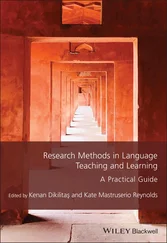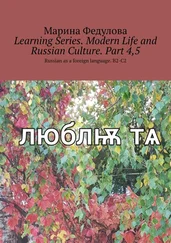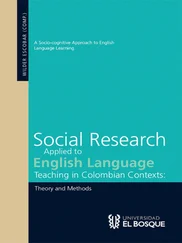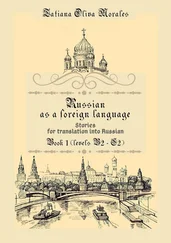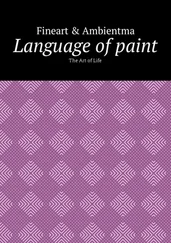1 ...8 9 10 12 13 14 ...39 The teacher doesn’t use words like a writer, but like an improviser. The educator is like a creative artist, speaker, actor, or rather – a spontaneous poet who has to create both text and style of presentation in one and the same moment.61
Artistry in teaching can only be achieved through following artistic principles:
Insofar as a pedagogical-didactic act can be called a work of art, to this extent it follows aesthetic principles in its development. Insofar as the teacher follows these norms, he is an artist.62
In examining the criteria which makes it possible to ascertain whether teaching has attained a level that can be considered artistic, Weber focuses on the inner connection of the teacher to what she is teaching. It is the nature of that highly personal relation that he considers to be decisive:
If a teacher wants to bring his material to life, then he has to feel it. He has to be deeply moved by this material; only then will he be able to fully grasp it and only then will the tone of his words attain the form of expression that is necessary in order to evoke in the listener a mood of seriousness or humour, peaceful reflection or flaming enthusiasm, empathy or anger, grief or joy. Only then will his physiognomy and his gestures reflect what is natural, authentic and true and not appear affected, contrived or false. Arising from the same feeling, the meanings of words and gestures can thus be coordinated with the same idea, attaining a unity as in a poetic-mimetic improvisation.63
A further decisive criterion in judging the artistry of a teacher is the pupil’s experience in the classroom. When a teacher has attained a high level of artistry, what occurs in the classroom fully parallels the aesthetic experience of a work of art. Such experiences by their very nature preclude any traditional forms of pedagogical analysis:
A lesson should be truly experienced. And even if it were possible to set down and record accents and gestures it would be highly unusual to be able to delineate a pedagogical work of art. The educational artist doesn’t permit his art to be ‘caught’ – in this respect he clearly differs from experimental educators – by means such as attempting to make written notes whilst teaching a lesson or through some other technique of notation. The very thought of fixation would impair the work of art, if it didn’t totally destroy it. A lesson should be a continuous fabric of thought and feelings, a complete experience.64
Weber develops his understanding of teaching as an art also in the context of establishing a polarity to viewing teaching as a science. This distinction is not only decisive in how teachers view themselves, but is also reflected in how they view their pupils. In the context of Weber’s times this meant contrasting the teacher’s empathetic, intuitive understanding of her pupils, with the distanced, objective views propagated by the budding science of educational psychology:
This love of children, this immersion, this sinking of oneself into the nature of the child is at the same time the natural precondition for understanding the child’s soul. (…) In practice, all psychological speculation would either lead to a failure to grasp the point or through its doubts and reflections would miss the right moment to act. A healthy sense for what is necessary enables one to unhesitatingly choose what is appropriate for a given situation. Children want to be empathized with and at the same time intuitively understood – in a word, they want to be fully perceived. They don’t allow themselves to be reduced to any scientific formula. All psychological research on children fails with respect to its practical pedagogical applicability because it fails to grasp the child’s individuality which remains eternally inaccessible to conceptual analysis.65
Baldur Kozdon (1982) summarizes the three central maxims of the Kunsterziehungsbewegung :
Young people should be led to have a comprehensible understanding of works of art and should be receptive to perceive that which is beautiful.
Artistic activities, as personal and creative acts, serve to emancipate the productive, creative forces in the human being.
The educational and pedagogical activities of the teacher should be imbued with artistry.66 (Underlined in original)
In a number of respects the Kunsterziehungsbewegung can be considered a largely forgotten chapter of the German educational reform movement in the first third of the 20 thcentury.67 As its influence gradually diminished in the 1920’s, a rigorous and scientific approach to teaching and schooling reflected in the Experimentelle Pädagogik and the Lernschule became increasingly prevalent. A well-grounded view of teaching and learning developed from the tested methods of experimental research was contrasted with the romantic feelings and dilettantism which a Künstlerpädagogik was seen to represent. As R. Lay, one of the most influential figures in the movement to establish a scientific basis for teaching wrote,
Education will only thrive in the bright light of science and not in the twilight of the romantic.68
After the struggles of the reform movement in the 1920s and the simultaneous ascent of the Lernschule , the question of whether teaching was a science or an art gradually ceased to be a central pedagogical issue. Viewing teaching as a science became the generally accepted way of educational thinking.
1.2.8 The Teacher as Artist – Waldorf Education
In stark contrast to the Kunsterziehungsbewegung , the founding of the first Waldorf School by Rudolf Steiner (1861–1925) in Stuttgart in 1919, which had little visible effect on the pedagogical thinking of that time, has since grown to become a leading international educational reform movement with over 1200 schools and 2000 kindergartens all over the world.69 Steiner’s view of education as an Erziehungskunst and the teacher as an Erziehungskünstler is one of the central motives going through all his educational writings. His view of teaching as an art is deeply rooted in the aesthetic concepts of German Idealism, most notably and directly in Schiller’s Ästhetische Briefe. This becomes particularly evident in the connections which Steiner draws to Schiller’s understanding of the profound significance of ‘play’ in human development and its intrinsic relation to artistic experience:
Whoever can perceive, through true knowledge of the human being, the inner Self of a child on his path from play to life’s works, can perceive the nature of teaching and learning. For the seriousness of the child’s play reveals that inner drive towards activity in which the Self of the human being can be found. It is simply foolish to say the children “should learn through playing”. An educator who organised his activity accordingly would educate people for whom life was more or less only a game. It is however the ideal of education and teaching to awaken in the child a sense for learning so that he learns with the same degree of seriousness as in play, as long as play is the only content of his life. An educational approach and practice which understands this will be able to give art its rightful place and its cultivation the appropriate priority.70 (italics in original)
[Wer in echter Menschen-Erkenntnis die kindliche Wesenheit auf dem Wege von dem Spiel zur Lebensarbeit belauschen kann, der erlauscht die Natur des Lehrens und Lernens. Denn beim Kinde ist das Spiel die ernste Offenbarung des inneren Dranges zur Tätigkeit, in welcher der Mensch sein wahres Dasein hat. Es ist eine leichtsinnige Redensart, zu sagen: die Kinder sollen „spielend lernen“. Ein Pädagoge, der seine Tätigkeit darnach einrichtete, würde doch nur Menschen erziehen, denen das Leben mehr oder weniger ein Spiel ist. Es ist aber das Ideal der Erziehungs- und Unterrichtspraxis, in dem Kinde den Sinn dafür zu wecken, daß es mit demselben Ernste lernt, mit dem es spielt, so lange das Spielen der einzige seelische Inhalt des Lebens ist. Eine Erziehungs- und Unterrichtspraxis, welche dies durchschaut, wird der Kunst die rechte Stelle anweisen und ihrer Pflege die rechte Ausdehnung geben.] (italics in original)
Читать дальше

